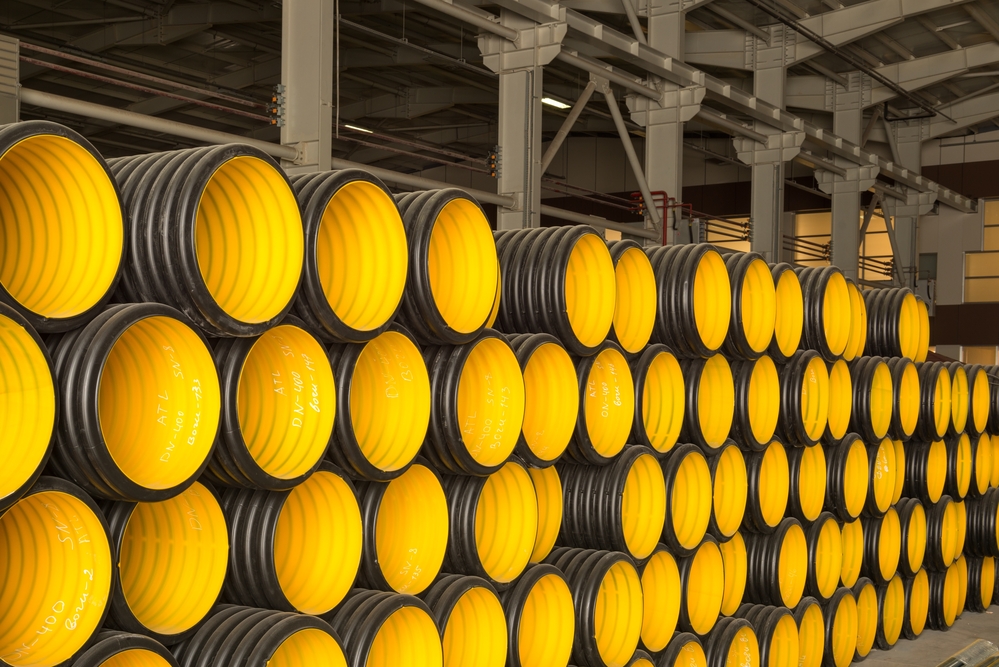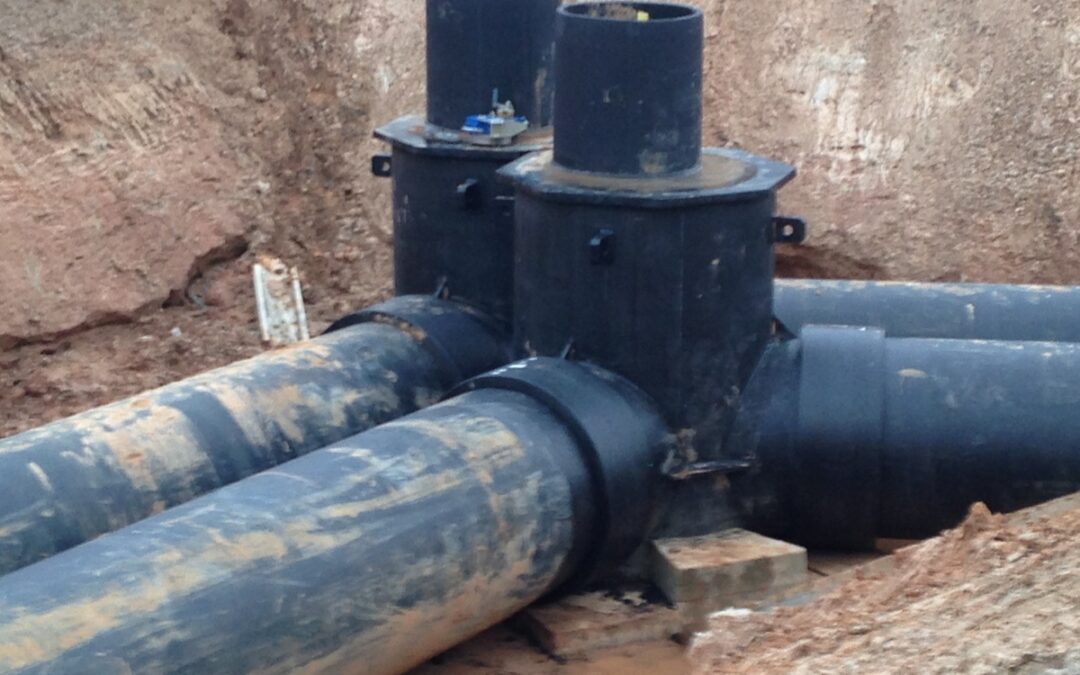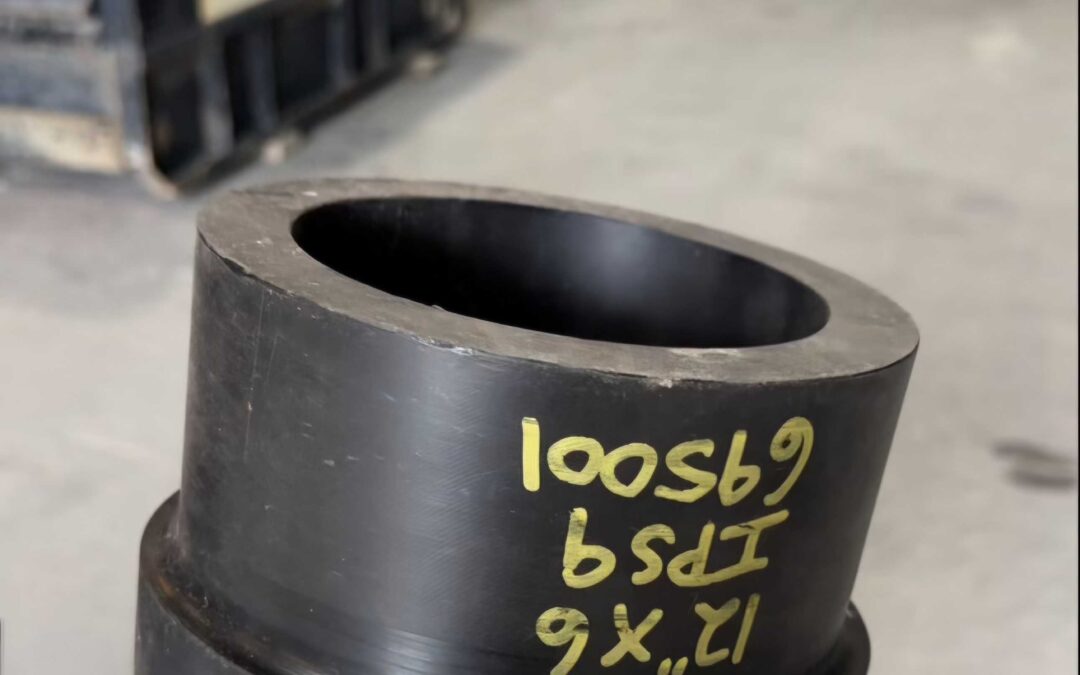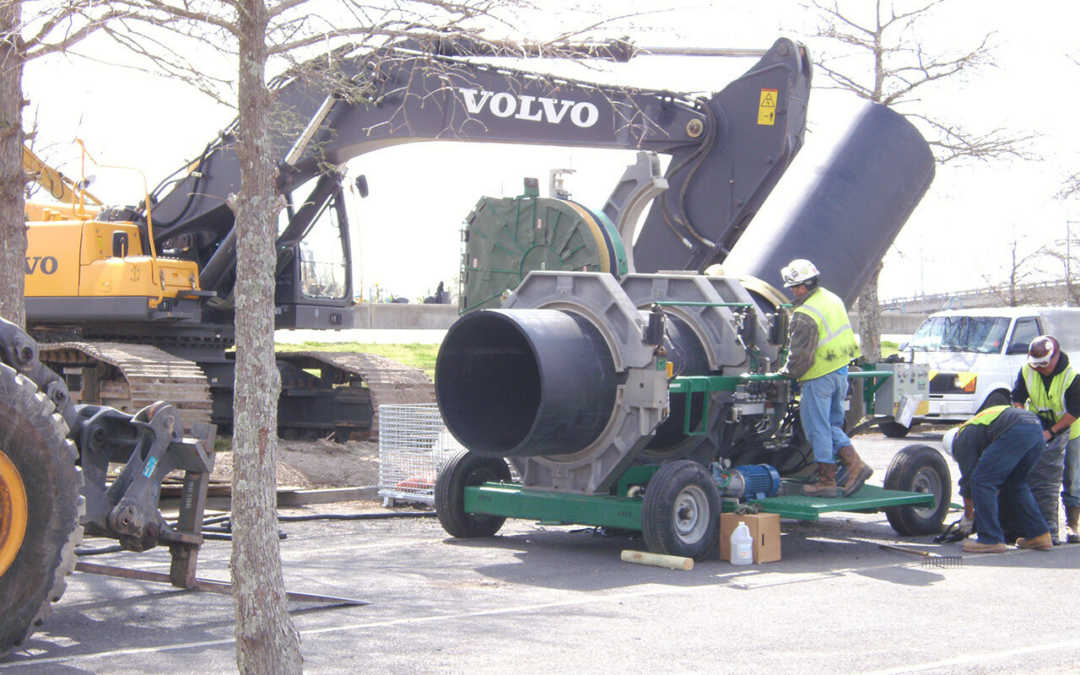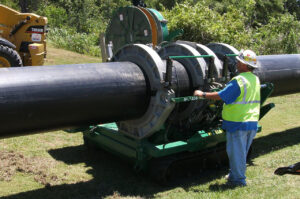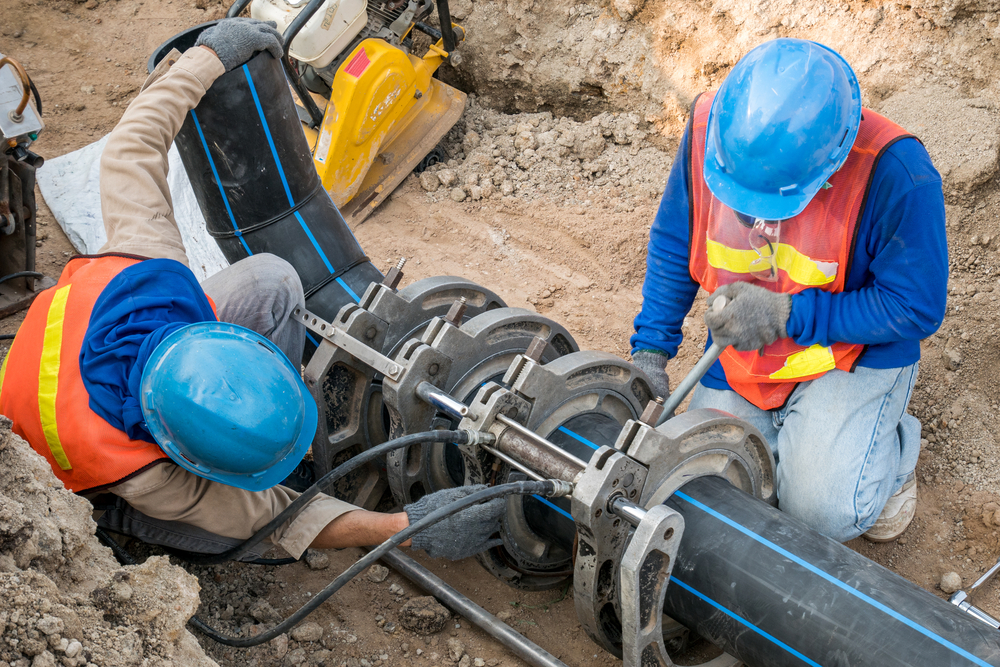
Choosing the Right HDPE Pipe Size: Factors, Considerations, and Applications
High-Density Polyethylene (HDPE) pipes are a cornerstone in modern piping systems, known for their durability, flexibility,leak free joints and resistance to corrosion. As you embark on your next project, the intricacies of selecting the correct HDPE pipe size can be crucial for operational efficiency and cost-effectiveness. Whether you’re working on a firewater , municipal water supply, industrial fluid transport, or irrigation systems, understanding the varying dimensions and capabilities of HDPE pipes will ensure your infrastructure is built to last. Dive into the world of HDPE pipes with us as we guide you through the essentials of sizing for your specific applications.
Understanding Standard HDPE Pipe Sizes & Dimensions
For professionals working on infrastructure projects, understanding the standardized dimensions of HDPE pipes is critical for ensuring compatibility and efficiency.
A standardized chart depicting HDPE pipe sizes serves as a guide for project planning and execution. These charts typically list the nominal pipe size (NPS) or outside diameter (OD) with corresponding wall thicknesses, which are critical for determining the pipe’s capacity and strength.
(should we put a link to the chart that is on our website right here for easy access ?)
Commonly Used HDPE Pipe Sizes
- 1/2 inch – Utilized mainly for small-scale residential water supply.
- 1 inch – Often employed in agricultural irrigation systems.
- 2 inches – Common in both residential and commercial settings for various uses.
- Up to 24 inches or larger – Suitable for firewater, municipal water and waste management systems.
These sizes indicate the versatility of HDPE pipes, catering to a myriad of needs from minor applications to large-scale municipal projects.
Understanding HDPE Pipe Sizes for Optimal Applications
When selecting the right High-Density Polyethylene (HDPE) pipe for your project, understanding the various sizes and their applications is essential. HDPE pipes are known for their durability and versatility, making them the go-to choice for a wide range of uses in the industrial, municipal, and agricultural sectors.
Common HDPE Pipe Sizes and Their Applications
- Small Diameter Pipes (20mm to 32mm): These smaller sizes are often used for micro-irrigation systems, as service lines for residential water supply, and for fiber optic cable protection. They are popular in landscape irrigation and for the distribution of drinking water to individual points of use.
- Medium Diameter Pipes (50mm to 110mm): Medium range HDPE pipes are perfect for larger irrigation systems, municipal water supply, sewerage, and drainage systems. They are widely utilized in urban and rural potable water supply lines and as main sewers in community drainage.
- Large Diameter Pipes (above 110mm): The larger diameter pipes are typically employed in high-demand situations such as firewater, municipal water mains, industrial effluent conduits, and stormwater drainage systems. They are also used in outfall lines for wastewater treatment plants and as conduits for larger cables.
Each size category is designed keeping in mind the requirements of pressure, flow rate, and environmental factors of the intended application. By matching the correct HDPE pipe size to its use, engineers and contractors can optimize performance and extend the lifespan of their piping systems.
How Dimension and Diameter are Interrelated in HDPE Pipes
Dimension and diameter are interrelated concepts in the context of HDPE pipes. The inside diameter dictates the flow capacity of the pipe, while other dimensions such as wall thickness contribute to the pipe’s pressure rating and overall strength. Understanding these relationships is crucial when selecting the appropriate pipe size for your specific requirements.
Understanding the Critical Role of SDR in HDPE Pipe Selection
The term Standard Dimension Ratio (SDR) is a crucial concept in HDPE pipe engineering, denoting the ratio of the pipe’s outside diameter to its wall thickness. Understanding SDR is essential because it directly affects the pipe’s ability to handle pressure and flow rates. Moreover, a lower SDR signifies a thicker wall, equipping the pipe to endure higher pressures, which is pivotal for safe and efficient fluid transport.
SDR can be determined by dividing the outside diameter of the pipe by the wall thickness. The result of this calculation gives you the SDR, which is a dimensionless number. This simple yet powerful formula helps engineers and installers to categorize pipes based on their pressure handling abilities and ensures that the correct type of pipe is used for each unique application.
- Example: If an HDPE pipe has an outside diameter of 8in and a wall thickness of 0.4in, the SDR is 20 (8in ÷ 0.4in).
The SDR value of an HDPE pipe directly correlates with its maximum safe operating pressure. As stated earlier, pipes with lower SDR values are able to withstand higher pressures, which is a vital consideration in the selection process for projects that involve high pressure or critical applications. Choosing a pipe with an inappropriate SDR could lead to system failure, safety risks, and costly repairs.
How to Choose the Right HDPE Pipe Size
Choosing the correct HDPE pipe size is critical for the success and efficiency of any piping system. The decision-making process involves considering several factors that impact the pipeline’s performance and longevity. Below, we outline how to navigate these considerations to ensure optimal functionality.
HDPE pipe selection is not a one-size-fits-all situation. Depending on the unique aspects of your project, a variety of elements will guide your decision:
- Flow Velocity: It is essential to maintain flow velocity within suitable limits to prevent issues such as erosion or sedimentation.
- Flow Volume: The volume of fluid that must pass through the pipe during a unit of time directly impacts diameter selection.
- Application Specifics: Tailor your pipe size choice to the particular needs of its application, whether for municipal, industrial, or other uses.
Understanding how the HDPE pipe will be used, the anticipated flow rates and the pressure requirements are crucial. For instance, high-pressure applications might require a pipe with a greater wall thickness to withstand the internal stresses, while a lower-pressure, high-flow system might prioritize diameter size to minimize friction loss.
A Step-by-Step Approach to Selecting the Correct Pipe Dimension
Selecting the appropriate HDPE pipe size requires a methodical approach. Follow these steps:
- Assess the Application: Determine the pipe’s intended use, including environmental factors and service conditions.
- Calculate Flow Rates: Use industry-standard calculations or software to estimate the peak and average flow rates.
- Understand Pressure Needs: Identify the pressure rating needed based on system demands.
- Refer to SDR: Check the standard dimension ratio to find a pipe that can handle the required pressure.
- Consider Future Expansion: Account for potential system upgrades or expansions that may increase demand.
Selecting the right HDPE pipe size is a delicate balance between numerous technical specifications and practical requirements. However, with careful consideration and accurate calculations, you can ensure the size of the pipe you choose will serve your needs effectively and efficiently.
Key Factors Influencing HDPE Pipe Size Selection
Selecting the correct HDPE pipe size is crucial for system efficiency, durability, and cost-effectiveness. There are various factors to evaluate when deciding on the appropriate pipe dimensions for your project. Understanding these aspects will ensure optimal performance and compatibility throughout your piping system.
Pipe Flow Requirements
The anticipated flow rate or volume of the fluid being transported is one of the primary determinants in pipe size selection. A pipe that is too small can restrict flow, causing pressure loss and potential blockages, while an overly large pipe may lead to unnecessary expense and reduced system efficiency. HDPE flow rates are calculated using the Hazen-Williams equation. Flow rates for HDPE systems are much higher than other pipe systems with the same diameter. Calculating the required flow rate ensures that your selection matches the system’s needs for both immediate and future demands.
Pressure Rating
The system’s operating pressure is critical in specifying the proper pipe size. HDPE pipes are available in various pressure ratings, and choosing the correct rating ensures that the pipe has the appropriate wall thickness and diameter to withstand the system’s internal pressure. Temperature should also be known and used when calculating pressure ratings. This consideration is especially crucial for applications that involve high-pressure fluids.
Project Scope
The scale and scope of the project also play a significant role in size selection. Larger projects may require pipes with greater diameters to efficiently distribute fluids over long distances. Furthermore, factors such as terrain difficulty, the potential for environmental stress, and the installation environment should influence the pipe size to ensure a successful, lasting application.
Material Compatibility
Lastly, it is essential to ensure the selected HDPE pipe sizes are compatible with existing or planned fittings, connectors, and other system components. Compatibility with system hardware helps prevent leaks, maintains the integrity of the connection points, and facilitates ease of maintenance and repairs throughout the life of the pipeline.
Securing Success with the Right HDPE Pipe Size
We’ve underscored the importance of understanding the various dimensions and specifications that define these durable and versatile pipes. Choosing the correct HDPE pipe size is not just a matter of economics; it’s about ensuring efficiency, longevity, and operational success for your projects.
From the importance of the Standard Dimension Ratio (SDR) to the critical pressure ratings, each aspect plays a pivotal role in determining the right fit for your application. Keep in mind the wider scope of applications that HDPE pipes cover, from municipal water supply to industrial waste management, and the role that precise sizing plays in each.
Action Steps to Selecting Ideal HDPE Pipe Sizes
- Review the project’s requirements in terms of flow, pressure, and application demands.
- Consult the HDPE pipe size charts and material specifications we’ve discussed to match those needs.
- Account for external factors, including environmental considerations and installation parameters.
- Engage with professional advice to validate your selection and adapt as necessary for optimal results.
Armed with this knowledge and the actionable steps outlined, you are well-equipped to make informed decisions when selecting HDPE pipe sizes for your projects. Your attention to detail in this selection process will go a long way in ensuring the efficiency, safety, and cost-effectiveness of your piping systems.

